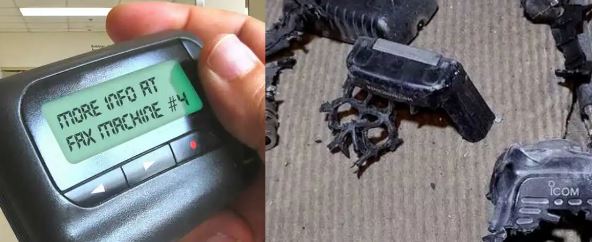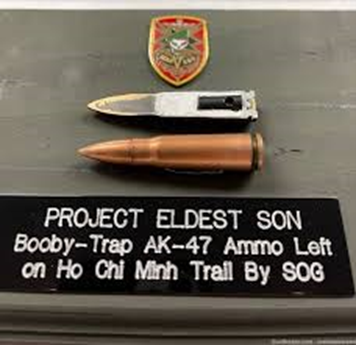WHAT WE KNOW
In the afternoon of September 17, 2024, hundreds of pagers used by individuals linked to the Iranian proxy armed group Hezbollah simultaneously exploded in several cities in Lebanon.
According to information delivered by the militant structure and the local Health Minister, at least nineteen people were killed and roughly 4000 were severely wounded because of the targeted killing activity. Very recent information referred to a second wave of sabotage ops executed the following day and involving rigged hand-held Icom two-way walkie-talkies (VHF) carried by militants, which were set off remotely, and allegedly other commonly used devices like laptops, radios, and car batteries.
WHAT WE DON’T KNOW
Even though, formally, no entity has claimed the operation so far, the sabotage carries the fingerprints of the security services of Israel. Concerning the escalating effects in terms of what is going to be next in the region on the part of Hezbollah possibly supported by the larger “Axis of Resistance” under Tehran coordination (which comprises other shite proxies located in the quadrant, like Iraqi, Syrian and Yemeni militias), it seems not a matter of “if” but “when”. The almost passive posture adopted by Hezbollah so far about the major engagement of Israel in Gaza, seems to be fading away: a most likely course of action appears to be a retaliatory response in the next period as a sign of a decisive stance on the part of the militant organization.
WHAT WE THINK
Pagers are 1.0 technologies small communication devices commonly used in the 1980s and 1990s before mobile phone tech became dominant. Beepers are one-way communication devices, allowing people to send a short message (a burst) via radio signal to the pagers: the devices display a short text message for the user, relayed by telephone through a central operator. Unlike mobile phones, pagers work on radio waves, the operator sending a message by radio frequency – rather than the internet – unique to the recipient’s device. It is assessed that the basic technology used in pagers as well as their reliance upon physical hardware means they are harder to monitor, making them popular with groups not only in the realm of terrorism but also in the organized crimes arena. In contrast, both mobility and security are deemed essential elements of self-protection.
Based off information leaked on social media platforms, thousands of encrypted pagers, which exploded in Lebanon, were imported by a Taiwanese-based Company that signed an agreement with a Hungarian firm to manufacture the devices and use the original brand. It has been reported that the pagers were booby-trapped before reaching Lebanon (roughly 5 months ahead of the shipment) by inserting ounces of explosive material (most likely pentaerythritol nitrate-PETN) planted close to the devices’ batteries. The mechanism would entail a trigger to set remotely in motion the detonation chain, by taking advantage of the progressive heating of the batteries, with a 5-second delay for the ignition of the explosive purposely engineered to concede the target the time to retrieve the beeper and visualize the message so that, when the charge sets off, the user can be hit in the eyes or hands. As for the other commonly used devices turned IEDs, it is still to completely grasp the detonation process due to the fact that most of them uses lithium batteries that might have been triggered as exploding tools thru other activation mechanisms.
The following are some considerations over the topic:
- hybrid approach: Israel has been using all the ingredients of the “soupfare” at their disposal. Alongside classic kinetic engagements, mostly in dense urban areas, more nuanced means of war are being employed: psy-ops, sabotage and targeted killing campaigns, electronic/cyber warfare, diplomatic pressure, critical system disruption;
- dual-use weaponization: the electronic warfare campaign currently being waged in Lebanon carries the characteristics of the asymmetric employment of widely spread portable devices turned into weaponized, ballistic dual-used tools that are in essence individual-carried IEDs. The added value is that the maneuver – due to the wide spread use of these tools, be they pagers of radios or other deceives – envisions a “swarming approach” implying the saturation of the battlefield by making the wide pool of targeted individuals both the means and the objectives of the kinetic activity;
- targeting process: in order to get the sabotage accomplished, the main requirement must have been to infiltrate ahead of the operation the logistical supply chain pertaining to the pager distribution. In terms of targeting process, the window of opportunity in argument can be identified as the find and fix phases. Having this goal in mind, HUMINT assets must have been employed in order to figure out the right moment not only to plant the explosive inside the devices, but also and mainly to assess when the Lebanese militant organization would be adopting and delivering the tools;
- vulnerability assessment: the planning process aimed at identifying the enemy center of gravity – and then the related critical requirements and capabilities – for the ensuing execution of the sabotage course of action has to have been delved around turning a supposed Hezbollah strength into its weakest point: given the need to communicate and based on the Hezbollah hierarchy’s disposition to get rid of mobile phones (for countering enemy surveillance activities) by replacing them with beepers, targeteers must have employed the CARVER – Criticality, Accessibility, Recuperability, Vulnerability, Effect, Recognizability – matrix to single out the object, in this case commonly used, battery–fed devices, to get weaponized;
- phases: in terms of military campaign phases, the unfolding events might mark the features of the first three phases – “shaping, deter, seize the initiative” – ahead of a possible ground operation and that are aimed at favorably influencing the battlefield with the goal of setting the conditions – in this case by disrupting the critical capability enabling the communication channels – for dominating the enemy by blowing the decisive offensive strike;
- second order effects: the ballistic sabotage has produced second order effects which are on the one hand psy-ops in nature, no one feels safe, even in their own houses, to operate tools and devices which are of common peaceful use given the possibility of being weaponized; on the other, the temporary disruption of the health system, due to mainly not deadly injuries of targeted individuals who have been hit by shrapnel from the booby-trapped devices into eyes, hands, limbs, reproductive apparatus and who are saturating hospitals and require blood supplies;
- Munich on steroids: the selected punishment seems to be a 2.0 edition of the 1972 Munich massacre whereas Israel reserves the right to violently castigate those deemed directly or indirectly responsible for harming or endangering the life of its citizens;
- proscription list: another desired effect of the campaign is the possibility, through local HUMINT assets working in hospitals or at the Lebanese Ministry of Health, to infer a current of list of a substantial number of Hezbollah members or supporters by cataloging those recovered due to the explosions, based on the assumption that the individuals carrying the pagers are unequivocally in force of the organization. Of note, the Iran Ambassador to Lebanon was reportedly recovered with injuries compatible with having or being close to somebody having a pager. Additionally, allegedly 40 Houthi militants present in Lebanon were also injured in connection with the sabotage campaign;
- nothing new though … : the current kinetic campaign that is being waged by viciously weaponizing dual-use devices, in terms of seeking to physically damaging the opponent while psychologically exploiting the fear and uncertainty brought about as a consequence, is not new. During the Vietnam War, the US Government set in motion an interagency project, named “Eldest Son”, aimed at wreaking general mayhem and causing the Viet Cong and NVA to doubt the safety of their guns and ammunition. Basically, the scheme would entail to leave in place ammo caches that were found during patrols and booby-trap single ammunitions and mortar shells that were stored inside instead of removing the boxes or blowing up the stuff. The effect was that the enemy would have used rifle magazines or mortar shells in the belief of employing the artifacts against the US troops, while finding himself overwhelmed by the explosion of the weapon and getting killed instantaneously. Eldest Son cartridges originally were reloaded with a powder similar the ordinary gunpowder but actually high explosive triturate sufficiently shock-sensitive that an ordinary rifle would activate it. Alongside the kinetic effects, the psychological consequences of doubt and dilemma were also exploited to wear down the cohesiveness of the enemy by disrupting the bona fides of the supply chain and then towards the hierarchy. Similarly to what has happened in Lebanon, the Project Eldest Son’s greatest challenge was the placement phase, i.e. getting the rigged devices into the enemy logistical system without detection.



